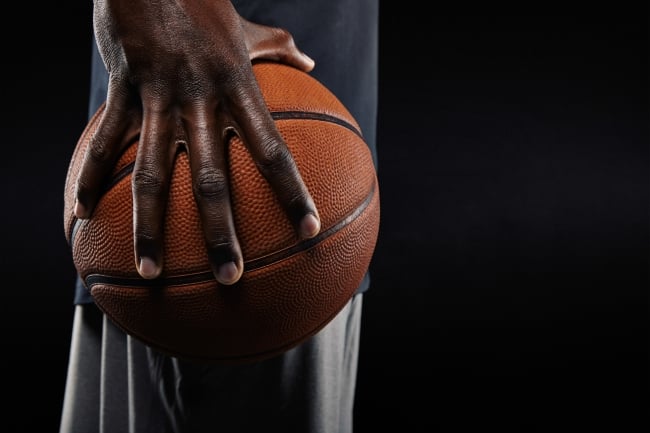You have /5 articles left.
Sign up for a free account or log in.

jacoblund/iStock/Getty Images Plus
This year’s National Collegiate Athletic Association’s (NCAA) Division 1 (D1) men’s basketball championship takes place at a contradictory moment for Black male college students. The Supreme Court’s recent ruling banning race-conscious admissions laid bare how, except in limited environments like college athletics, Black men are not viewed as valuable contributors on campuses. But in athletic environments, Black men are overrepresented, especially in the revenue-generating sports of football and basketball. And now, these programs are facing a long overdue athlete-driven and judicially sanctioned reckoning of how they actively exploit athletes.
These systemic shocks to higher education undercut the notion that college athletics are a primary driver of socioeconomic mobility for young Black men. Unfortunately, universities are more interested in profiting from athletes’ labor than in supporting their academic and professional development. And despite the rise of new schemes to pay college athletes such as donor collectives and other name, image and likeness deals, college athletics is still an industry where the labor force largely works for free. In the case of large public universities with multimillion-dollar athletics programs, the workplace is financed by taxpayers. The results are unacceptable for Black male students both with and without athletic talent—and the NCAA tournament is a compelling example of this.
Throughout this month, 884 men’s basketball players on athletics scholarships representing 68 universities will compete in one of the largest sporting events in the world. The total value of the 22-year deal between the NCAA and CBS and Turner Sports to broadcast the annual tournament is $19.6 billion. Media-related revenue from the men’s tournament is the single largest share of annual revenue distributed back to NCAA member institutions, with more than $170 million sent through the Basketball Performance Fund in 2023.
However, the predominantly young Black men who are responsible for generating this revenue receive next to nothing from this financial windfall, and their participation in the tournament often comes at great personal cost.
For the 2022–23 academic year, nearly 57 percent of D1 men’s basketball scholarship players identified as Black. Graduation rates for men’s basketball players are poor regardless of racial group, but they are especially poor for Black men. Only 48 percent of the last four classes of men’s basketball players graduated within six years. The four-year class graduation rate for Black men’s basketball players was 44 percent, below the rate for all Black male college athletes (55 percent) and all Black males attending D1 universities (45 percent).
Basketball also reported the second-highest number of major injuries in men’s collegiate sports during the 2022–23 academic year, with 56 percent of upperclassmen reporting at least one sports-related injury that required surgery, hospitalization or more than a month away from training or competition. Athletes in revenue sports such as men’s basketball are also subject to intense monitoring and surveillance because colleges depend so heavily on their ability to stay healthy and academically eligible. As such, Black male athletes are disproportionately subjected to biometric data collection and live location tracking even when they’re not at official team events.
Lost in the increasing public recognition of the true nature of college athletics is that this current system of exploitation has been operated by predominantly public universities. Though private universities make up an overall majority of total NCAA membership, two-thirds of NCAA D1 institutions are public. That means that the institutions arguing that athletes are no different than other students while simultaneously exerting a level of control over them akin to a professional sports league are the ones that were founded to break the bonds of societal privilege.
The desperate efforts to retain the financial windfall of college athletics at all costs reflect a long history of how U.S. public universities still feel entitled to the fruits of the uncompensated physical labor of athletes. After integration of college campuses brought more Black athletes onto sports teams and football and basketball programs transformed into cash cows for their campuses, this exploitation became racialized. The avowed mission and principles of public education are at odds with the tactics of some universities, such as considering investment from private equity firms to fund athletic departments, and increasing spending on Congressional lobbying to maintain the current system. The recent NCAA proposal that would only ask willing universities to pay half of their athletes through dedicated trust funds also reflects this disconnect.
Policymakers have a responsibility to ensure that public colleges and universities fulfill their purpose to serve all students without relying on the free labor of one traditionally marginalized group of students to finance educational and social opportunities for others. If college athletics continues operating as the multi–billion-dollar global sports industry it currently is, it must adhere to the standards of other industries by recognizing and fairly compensating its employees.







